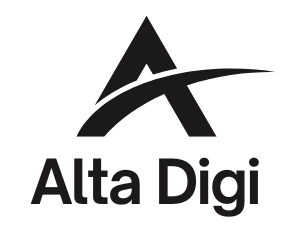To effectively reach your audience, you must first understand who they are. This involves delving into their demographics, interests, and pain points. By creating detailed buyer personas, you can visualize your ideal customers and tailor your marketing strategies to meet their specific needs.
Consider factors such as age, gender, location, and income level, as well as their preferences and behaviors. This foundational knowledge will guide your content creation and marketing efforts, ensuring that you resonate with your audience on a deeper level. Moreover, understanding your target audience goes beyond mere demographics.
You should also explore their motivations and challenges. What drives them to seek out your product or service? What obstacles do they face that your offering can help overcome?
Engaging in market research, surveys, and direct conversations with potential customers can provide invaluable insights. By empathizing with their experiences, you can craft messages that not only attract attention but also foster a genuine connection, ultimately leading to higher conversion rates.
Key Takeaways
- Understand your target audience by conducting thorough research and creating buyer personas to tailor your content and marketing strategies.
- Create compelling content that resonates with your audience’s needs, pain points, and interests to drive engagement and conversions.
- Utilize social media platforms to connect with your audience, share valuable content, and build a community around your brand.
- Implement email marketing campaigns to nurture leads, provide valuable information, and drive conversions through targeted messaging.
- Leverage search engine optimization (SEO) to improve your website’s visibility and attract organic traffic by optimizing keywords, meta tags, and content.
- Utilize paid advertising on platforms like Google Ads and social media to reach a wider audience and drive targeted traffic to your website.
- Engage in networking and partnerships to expand your reach, build relationships, and collaborate with other businesses for mutual benefit.
- Analyze and optimize lead generation campaigns by tracking key metrics, testing different strategies, and making data-driven decisions to improve results.
Creating Compelling Content
Once you have a clear understanding of your target audience, the next step is to create compelling content that speaks directly to them. High-quality content is the cornerstone of any successful marketing strategy. It should be informative, engaging, and relevant to your audience’s interests.
Whether you choose to write blog posts, produce videos, or create infographics, ensure that your content provides value and addresses the needs of your audience. This approach not only establishes your authority in your niche but also builds trust with potential customers. In addition to being informative, your content should also be captivating.
Use storytelling techniques to draw readers in and keep them engaged. Personal anecdotes, case studies, and relatable scenarios can make your content more relatable and memorable. Incorporate visuals to break up text and enhance the overall user experience.
Remember that the goal is not just to inform but also to inspire action. Include clear calls-to-action (CTAs) that guide your audience on the next steps they should take after consuming your content.
Utilizing Social Media Platforms

Social media platforms are powerful tools for reaching and engaging with your target audience. Each platform has its unique characteristics and user demographics, so it’s essential to choose the right ones for your business. Whether it’s Facebook, Instagram, Twitter, or LinkedIn, tailor your content to fit the platform’s style and audience preferences.
For instance, Instagram thrives on visual content, while LinkedIn is more suited for professional insights and industry news. Engagement is key when utilizing social media. Don’t just post content; interact with your audience by responding to comments, asking questions, and encouraging discussions.
This two-way communication fosters a sense of community and loyalty among your followers. Additionally, consider leveraging user-generated content by encouraging customers to share their experiences with your brand. This not only provides social proof but also enhances your brand’s authenticity in the eyes of potential customers.
Implementing Email Marketing Campaigns
| Metrics | Value |
|---|---|
| Email Open Rate | 25% |
| Click-Through Rate (CTR) | 5% |
| Conversion Rate | 3% |
| Bounce Rate | 2% |
| Unsubscribe Rate | 1% |
Email marketing remains one of the most effective channels for lead generation and nurturing relationships with potential customers. To get started, build a targeted email list by offering valuable incentives such as eBooks, exclusive discounts, or informative newsletters. Ensure that you segment your list based on various criteria such as demographics or purchase history to send personalized messages that resonate with each group.
Crafting compelling email content is crucial for capturing attention in crowded inboxes. Use engaging subject lines that entice recipients to open your emails. Once opened, provide valuable information that addresses their needs or interests.
Incorporate clear CTAs that guide them toward taking action, whether it’s visiting your website or making a purchase. Regularly analyze the performance of your email campaigns by tracking open rates, click-through rates, and conversions to optimize future efforts.
Leveraging Search Engine Optimization (SEO)
Search Engine Optimization (SEO) is essential for increasing your online visibility and attracting organic traffic to your website. Start by conducting keyword research to identify the terms and phrases your target audience is searching for. Incorporate these keywords naturally into your website content, including blog posts, product descriptions, and meta tags.
This will help search engines understand the relevance of your content and improve its ranking in search results. In addition to keyword optimization, focus on creating high-quality backlinks from reputable sources. This not only boosts your website’s authority but also drives referral traffic from other sites.
Regularly update your content to keep it fresh and relevant, as search engines favor websites that provide up-to-date information. By implementing effective SEO strategies, you can enhance your online presence and attract more qualified leads to your business.
Utilizing Paid Advertising

While organic strategies are essential for long-term growth, paid advertising can provide immediate results and boost lead generation efforts. Platforms like Google Ads and social media advertising allow you to target specific demographics based on interests, behaviors, and location. This precision targeting ensures that your ads reach the right audience at the right time.
When creating paid ads, focus on crafting compelling copy and eye-catching visuals that capture attention quickly. A/B testing different ad variations can help you determine which messages resonate best with your audience. Additionally, set clear goals for each campaign—whether it’s increasing website traffic or generating leads—and monitor performance closely.
By analyzing metrics such as click-through rates and conversion rates, you can optimize your campaigns for better results over time.
Engaging in Networking and Partnerships
Building relationships within your industry can significantly enhance your lead generation efforts. Networking allows you to connect with other professionals who may share similar audiences or complementary services. Attend industry events, webinars, or local meetups to establish connections and exchange ideas.
These interactions can lead to valuable partnerships that expand your reach and credibility. Consider collaborating with influencers or brands that align with your values and target audience. Joint ventures can take many forms—co-hosting webinars, creating co-branded content, or running joint promotions.
Such collaborations not only introduce you to new audiences but also enhance your brand’s reputation through association with trusted partners. By actively engaging in networking opportunities, you can create a robust support system that drives lead generation.
Analyzing and Optimizing Lead Generation Campaigns
To ensure the success of your lead generation efforts, it’s crucial to analyze and optimize your campaigns regularly. Start by setting clear metrics for success—these could include conversion rates, cost per lead, or return on investment (ROI). Utilize analytics tools to track performance across various channels and identify areas for improvement.
Once you have gathered data, take the time to assess what’s working and what isn’t. Are certain types of content generating more leads than others? Is there a particular social media platform driving higher engagement?
Use these insights to refine your strategies moving forward. Continuous optimization is key; don’t be afraid to experiment with new approaches or adjust existing ones based on performance data. By staying agile and responsive to changes in the market or audience behavior, you can enhance the effectiveness of your lead generation campaigns over time.
In conclusion, mastering lead generation requires a multifaceted approach that encompasses understanding your audience, creating compelling content, leveraging social media, implementing email marketing campaigns, optimizing for SEO, utilizing paid advertising, engaging in networking opportunities, and continuously analyzing performance metrics. By integrating these strategies into a cohesive plan, you can effectively attract and convert leads while building lasting relationships with customers.
If you are looking to enhance your lead generation strategies, you may want to check out The Ultimate Guide to Generating High-Quality Leads on LinkedIn in 2024. This article provides valuable insights and tips on how to effectively generate leads on LinkedIn. Additionally, you can also explore Get 3x More Qualified Leads with LinkedIn Sales Navigator for more advanced strategies to boost your lead generation efforts. By incorporating these resources into your marketing plan, you can significantly improve the quality and quantity of leads for your business.
FAQs
What are lead generation strategies?
Lead generation strategies are methods and techniques used to attract potential customers and capture their interest in a product or service. These strategies aim to generate leads, which are potential customers who have shown interest in a company’s offerings.
Why are lead generation strategies important?
Lead generation strategies are important for businesses because they help in identifying and attracting potential customers who are likely to be interested in the products or services offered. This can lead to increased sales and revenue for the business.
What are some common lead generation strategies?
Some common lead generation strategies include content marketing, email marketing, social media marketing, search engine optimization (SEO), pay-per-click (PPC) advertising, and networking events. These strategies aim to attract and engage potential customers through various channels.
How can businesses implement lead generation strategies?
Businesses can implement lead generation strategies by creating compelling and relevant content, optimizing their website for search engines, building an email list, engaging with potential customers on social media, and participating in industry events and networking opportunities.
What are the benefits of using lead generation strategies?
The benefits of using lead generation strategies include a steady flow of potential customers, increased brand awareness, higher conversion rates, and a more targeted approach to marketing efforts. These strategies can also help businesses build relationships with potential customers and nurture them through the sales funnel.

